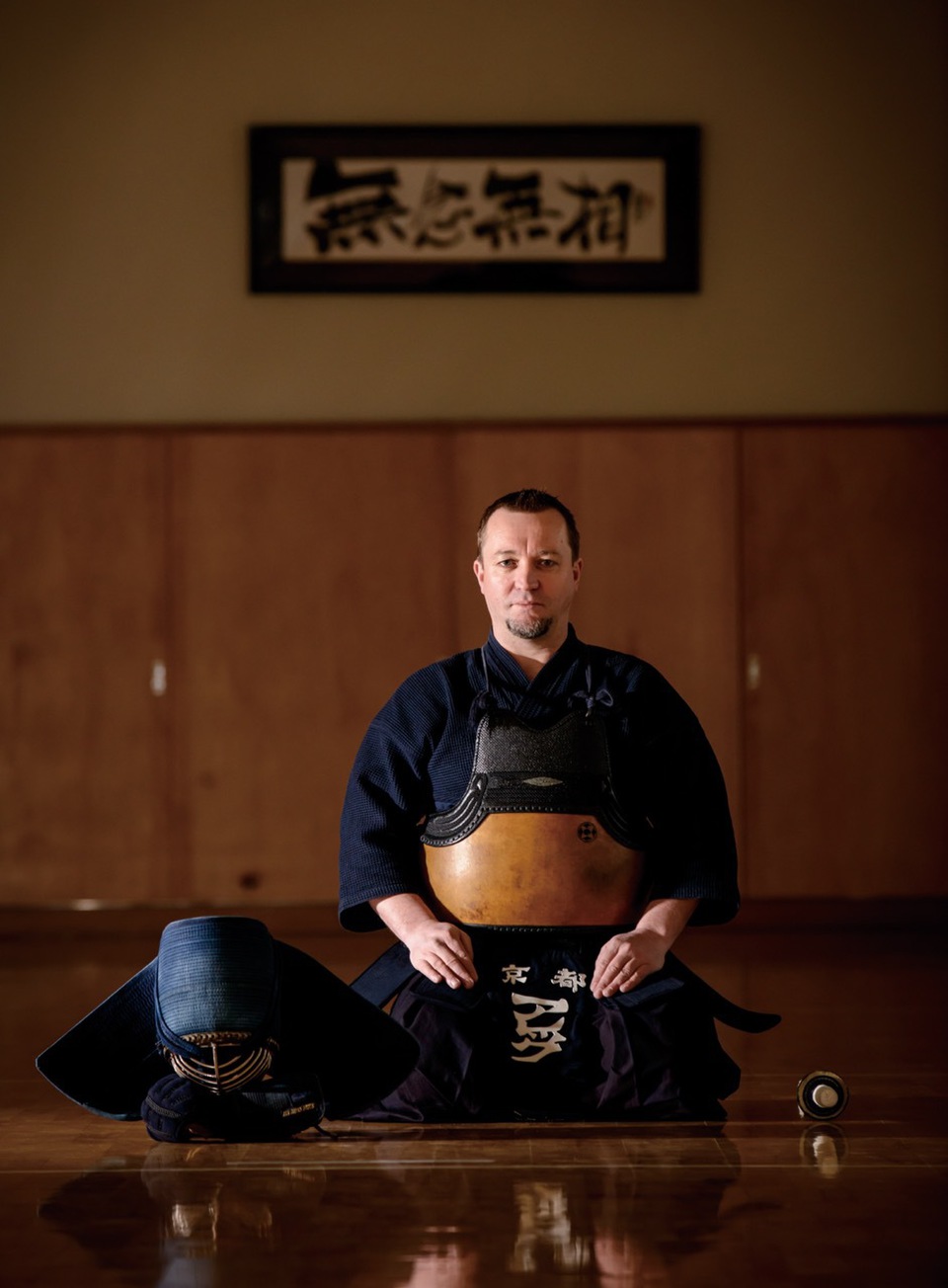Kendo: Developing One’s Spiritual Armor
Alexander Bennett
Professor Alexander Bennett at Kansai University Kendo Dojo,
where he teaches Japanese students the Way of kendo.
Professor Alex Bennett first came to Japan from New Zealand as a high-school student in 1987 on the Japan Rotary Exchange Program. He encountered kendo, a Japanese martial art, during that time, and it changed his life forever. After completing his Ph.D. at Kyoto University, he spent four years at the International Research Center for Japanese Studies (Nichibunken) and is now an associate professor at Kansai University.
Professor Bennett relates, “When I first encountered kendo, the helmet and bamboo sword reminded me of Star Wars and I thought of my teacher as being akin to Darth Vader. That was appealing to me as a teenager; but at the beginning kendo was very tough. It was certainly a baptism by fire. The training was highly rigorous, tough both mentally and physically. You are pushed to your mental limits, but this is an important part of the growth process. And it is only then that you reach a part of yourself you didn’t know existed.”
Kendo is a way of life that is written with the character dō . The word dō means a way or path (michi ) upon on which one bases one’s life; the same character is used in chadō (the Way of Tea). Professor Bennett continues, “I discovered a great spiritual strength in myself through kendo; I ceased to fear things, and various problems no longer bothered me the way they once had. I was able to learn the importance of letting go of my ego and became confident and, at the same time, humble. This is something one has to experience through long and consistent training. It is an ongoing process.”
According to Professor Bennett, one of the great things about kendo and other Japanese martial arts is that they are not merely competitive sports. In kendo, it is more about developing spiritual than physical armor. Kendo is based on the notion of a double-edged sword (tsurugi ), one side that is directed at the opponent, and the other at oneself. One aims to defeat oneself as much as one’s opponent in a never-ending process of selfperfection. One of the main concepts of kendo is zanshin, which literally means “lingering heart,” and it refers to the importance of developing a spirit of constant vigilance and respect.

The ultimate aim of this martial art form is to incorporate its elements into one’s everyday way of living. By this means, one is always looking deep inside oneself, both one’s thoughts and actions. One is always filled with feelings of gratitude to opponents because growth is impossible in kendo without them. Because of this, one never shows excessive joy in victory; one is always humble and thankful to the opponents. In addition, unlike Western sports, there is no retirement from kendo. As one ages physically, kendo becomes more spiritual. Instead of relying on physical strength, one focuses on the psychological openings in the other caused by fear, doubt, and hesitation, while seeking to purge one’s own weaknesses. Kendo becomes a real barometer for one’s level of maturity and psychological strength.
Professor Bennett concludes, “Proud of my identity as a New Zealander, I have a deep love and respect for the Japanese martial arts, which transformed my life and gave me a path to search things very deeply. I am not religious in a conventional sense, but I suppose I could say kendo fills this role, as it is a way of life for me. Over the years, I have become a bona fide Kiwi-Japanese, and hold an intense feeling of gratitude to generations of people who created the martial arts and their lessons and teachings that still survive in the culture of kendo. So for me, I think it is quite natural to visit the graves of the great warriors of the past. In the classical school of kendo that I belong to, which is called the Kashima Shinden Jikishin Kage-ryu, the founder and heads of the school from centuries ago are enshrined in the Kashima region, and I often visit there to express my gratitude for their teachings and wisdom. It is important to the Japanese to visit the graves of ancestors to express their respect to all the deceased, no matter who they are. Contemplating their ways and deeds helps to illuminate the present.”































































































































